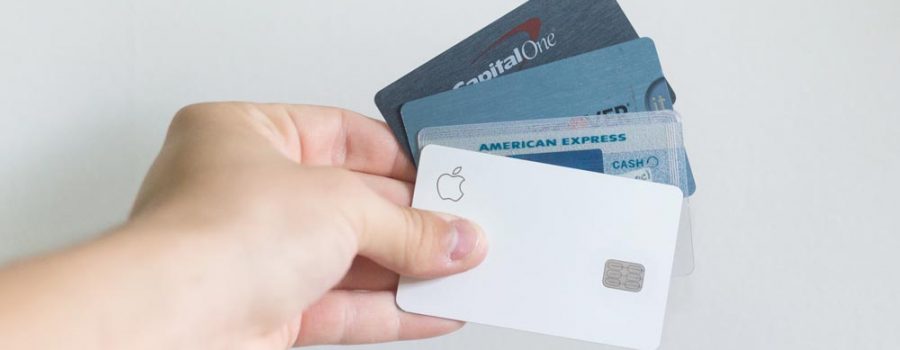Credit cards are critical to FICO scoring. Only paying your bills on time at 35 percent of your score is a more important scoring factor.
At 30 percent of your score the ratio of debt to available credit on your revolving accounts such as credit cards, store cards, gas cards and the like come in a close second in importance to timely payments.
The ratio of debt to available credit on installment loans such as car loans, mortgages and other loans with a fixed monthly payment is not nearly as important as the ratio of debt to credit limit on revolving credit. The outstanding installment debt is not calculated into the credit utilization ratio that is so critical to the score. All installment loans start out with 100 percent utilization and improve from there. Credit cards start out with zero percent utilization and lose altitude from that point on unless paid in full before the close of every statement. The ratio of debt to available credit in the aggregate is more important than the ratio on each individual card as follows:
Card “A” Limit is $2000.00….$1000.00 is owed.
Card “B” Limit is $1000.00….Zero is owed
The cardholder’s debt to available credit ratio is 33%. Add up the limits. Add up the balances. The result is your debt to available credit ratio. 33 percent is high…10 percent or less is much better. Don’t believe the oft quoted advice to keep the debt to available credit ratio at no more than 30 percent. Thirty percent is too high. The average utilization rate in the USA is 20.4%
Revolving Credit More Revealing
Why is it that lenders look to revolving credit history first? Credit cards are critical to FICO scoring because they are considered more reflective of how reliable the consumer is in the long run.
In a time of financial crisis when something has to give it is going to be credit cards going delinquent first. A consumer will do anything to keep his car from being repossessed or his house put into foreclosure. Keeping the credit card payments in the black shows the consumer has planned ahead and prepared for a rainy day. How past debt has been handled is the best indicator a lender has of how any future financial crisis will be managed.
Revolving Debt to Available Credit Ratio
Why should lenders be so concerned about revolving debt to available credit ratio if payments are always made on time?
A low debt to available credit ratio means that the debtor is a person who lives well within their means. It shows a lender that you are a person of restraint in financial matters. You do not feel the need to spend money just because you can. You enjoy the comfort of having a rainy day fund in the form of available credit to keep you out of trouble if things get tight.
Credit cards are critical to FICO because they are so easy to abuse. A high debt to available credit ratio here illustrates that a consumer is one problem away from financial catastrophe. Why else would they pay all that interest every month?
Don’t think that if you get into financial trouble you can just ask the credit card issuer to raise your credit limit. The time to ask for a higher credit limit is when you don’t need it. A perceived lack of need makes the lender more comfortable. Just as you would be more comfortable making a small loan to a friend whose finances were otherwise in good shape than you would be to a friend who was borrowing all over town.
The maxed out credit cards are so detrimental to your FICO score that if you are in that position the lender will refuse your request for a credit limit increase. Think ahead. Ask for the credit limit increase when your balance is at its lowest and your FICO score at its highest. The only reason a person would not want the highest credit limit they can get is if they don’t trust themselves not to abuse the added temptation.
https://www.creditbuildercard.com/onhomebuyingandcreditrepair.html
The best tool in the financial toolbox for those struggling to get their first credit card or to overcome a bad history of charge offs is the secured credit card. This is a card that reports to the credit bureaus every month as you use the money you put up for daily expenses. Really good ones let you put up as little as $200.00. https://www.creditbuildercard.com/onhomebuyingandcreditrepair.html
You then use the card for small expenses like a pizza or tank of gas and religiously pay it off on or before the due date each month. Deposit more when you can since it is money you will spend anyway.
Be careful not to charge any more for 4-5 days after the due date because the statement for the month must close to report a zero balance to the credit bureaus each month. Reporting too much of a balance will defeat your purpose. The balance as of the close of the statement every month is what is reported. After a few months of this you may qualify for a real credit card with a low limit. You can work your way up the ladder from there with continued timely payments.
Paying off Credit Cards with a Personal Loan because credit cards are critical to FICO
Many times you will see recommendations to pay off credit cards by taking out a personal loan. Pay off the credit cards. Pay the personal loan at lower interest and be adding an installment loan to your mix of credit types at the same time. This is fine on paper.
In the real world the high credit card balances will weigh down your score so much that you won’t qualify for the personal loan unless everything else is close to perfect or you have a co-signer. If you have a friend with a card with perfect history that will put you down as an authorized user those good attributes will help raise your score enough for you to possibly do this.




